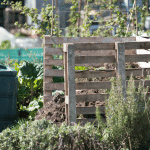Growing Your Own Herbs At Home
For those of you who are looking to expand your gardening skills beyond the confines of fruit and vegetable cultivation, why not consider growing your own herb garden? The joy of having a constant supply of fresh herbs to enhance the flavours of your meals cannot be overstated. Growing herbs is an easy and cost-effective way to add a touch of culinary flair to your meals, without having to rely on expensive store-bought varieties.
When starting an herb garden, one of the first things to consider is which herbs to grow. The list of herbs that can be grown at home is vast, so the best way to choose is to look at the herbs that you most frequently use in your cooking. For example, rosemary, sage, basil, dill, mint, chives, and parsley are all popular choices that are widely used in many British recipes. By growing your own herbs, not only will you save money, but you’ll also be guaranteed that the herbs you use are fresh and flavorful.
Popular Herbs To Grow Yourself
- Basil
- Thyme
- Sage
- Mint
- Chives
- Rosemary
- Parsley
- Oregano
- Coriander
- Marjoram
- Lavender
- Dill

The next consideration is the location of your herb garden. It is important to remember that the soil must have good drainage. Poor drainage can lead to a whole host of problems, including root rot and stunted growth. To ensure good drainage, it is advisable to dig a foot deep into the soil and add a layer of crushed rocks before refilling with soil. This will allow excess water to drain away, keeping your plants healthy.
When it comes to planting herbs, it is tempting to buy mature plants from the store, but this can be expensive. Instead, consider growing herbs from seed. This is much easier with herbs than with other plants, and it is a more cost-effective option. Some herbs grow extremely quickly, such as mint, and can quickly take over your garden if left unchecked. To avoid this, it is best to grow more aggressive herbs in pots with drainage holes.
When harvesting herbs, it is important not to take too much from the plant, especially if it is not yet well established. It is not recommended to take any leaves from the plant until it has been growing for several months. By allowing the plant to grow undisturbed, you will ensure that it remains healthy and produces herbs for many years to come.
Once you have harvested your herbs, the next step is to use them in cooking. Drying the herbs is the first step. This can be done by placing them on a cookie sheet and baking at 170°F for 2-4 hours. Once dried, you can consult your favourite cookbook for recipes and ideas on how to use your herbs to flavour your dishes.
When storing herbs, it is important to use a plastic or glass container, as paper or cardboard will absorb the flavour of the herbs. During the first few days of storage, it is important to regularly check the container for any moisture that may have accumulated. If moisture is present, the herbs will need to be re-dried to prevent the growth of mildew.
In conclusion, growing your own herb garden is a fantastic way to add some extra flavour to your meals and to improve your gardening skills. It does require some initial effort to prepare the soil for optimal drainage and to choose which herbs to grow, but once established, the process of harvesting and drying herbs is straightforward. So why not give it a try today and discover the joy of home-grown herbs?














No comments.